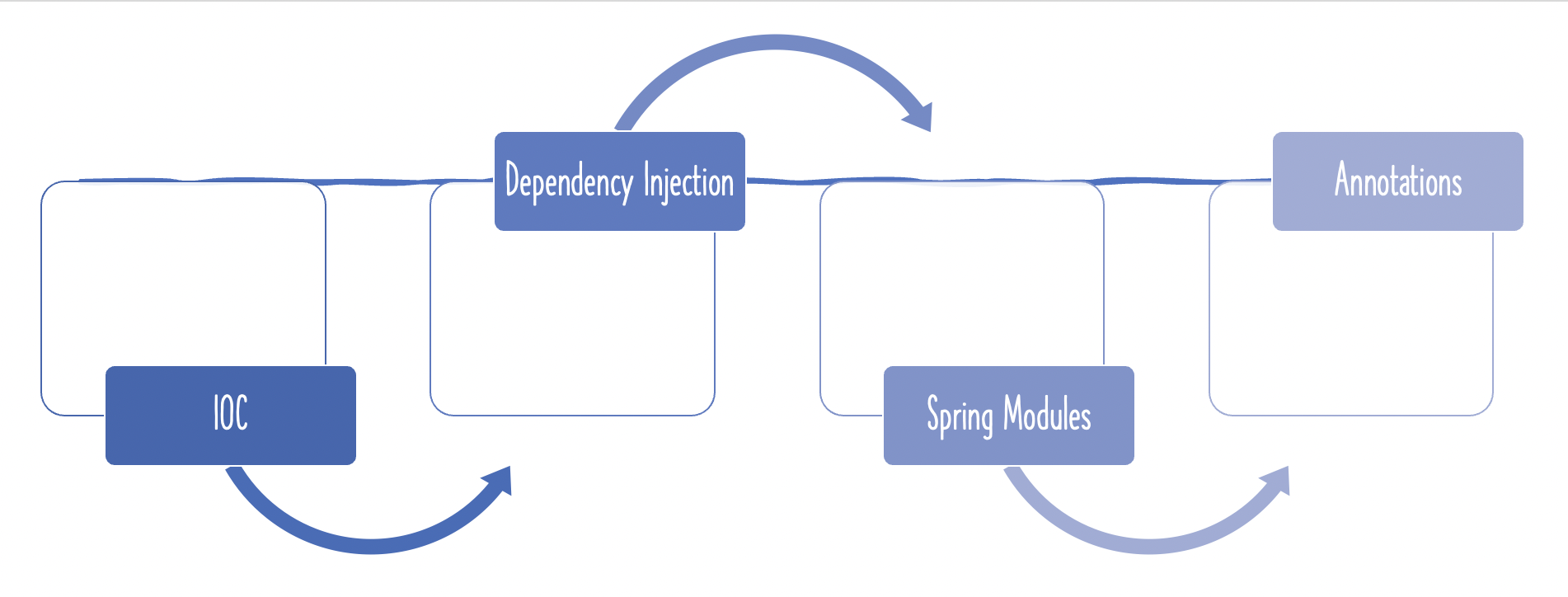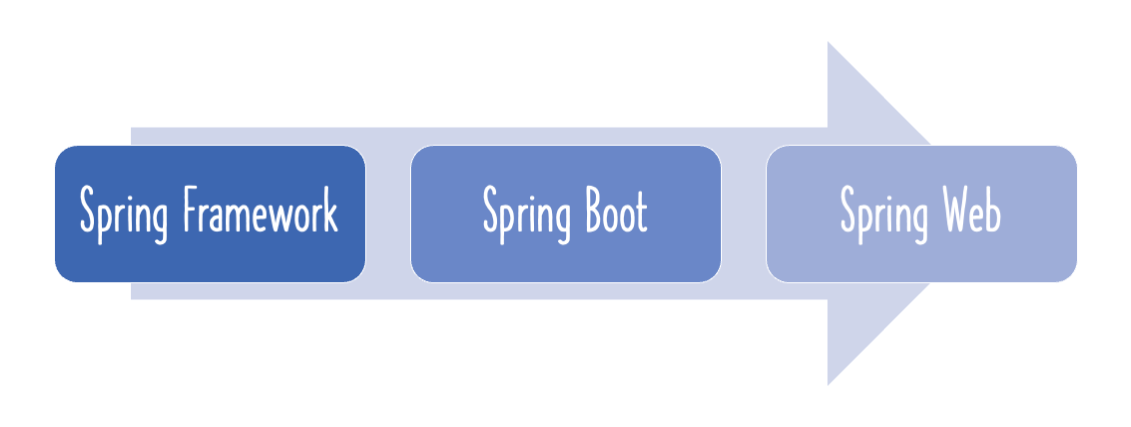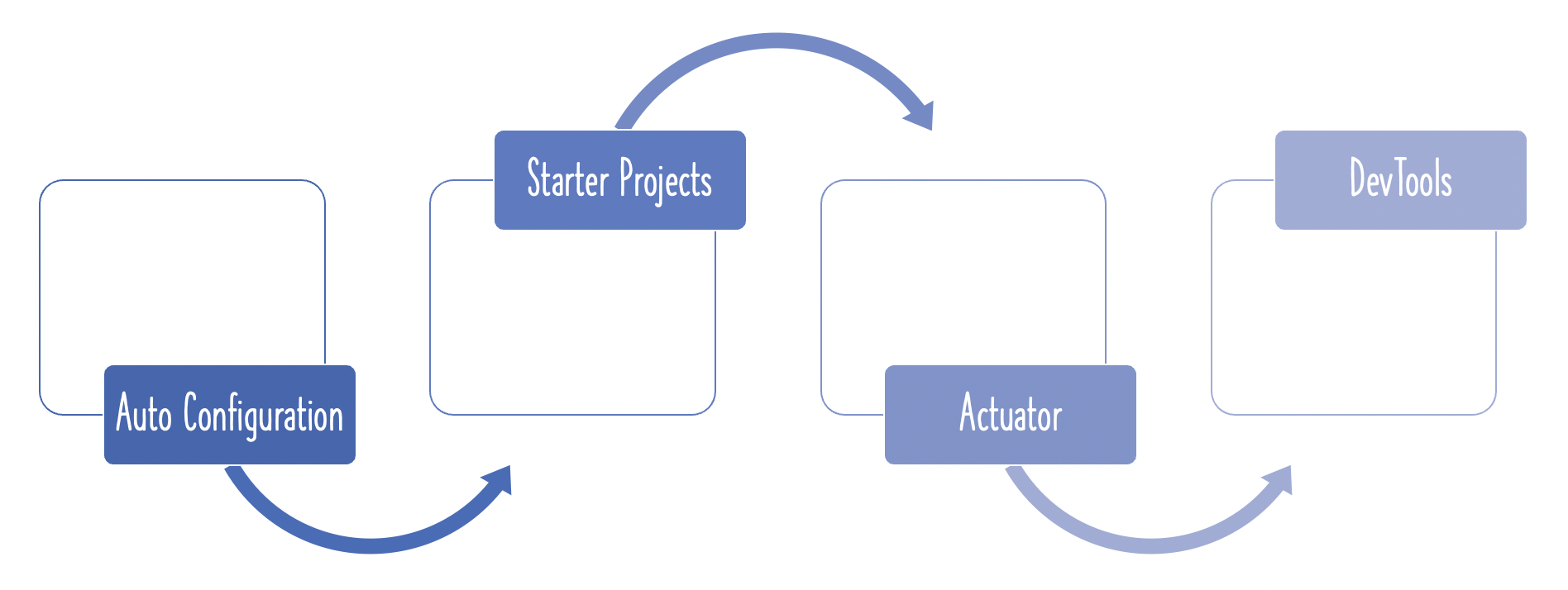Most important feature of Spring Framework is Dependency Injection. To understand Dependency Injection, you need to understand the concept of a Dependency.
You will learn
- What is a Dependency?
- How are applications built? How is one layer dependent on another?
- How is a class dependent on another?
- How does the Spring Framework do Dependency Injection?
In this article, we have a look at what a dependency is in general terms, and then in the context of the Spring framework.
Spring Framework
This is the second article in a series of articles on Spring Framework:
- 1 - Introduction To Spring Framework
- 2 - What Is A Dependency?
- 3 - What Is Dependency Injection?
- 4 - What Is Component Scan?
- 5 - Architecture of Spring Framework - Modularity and Spring Modules
- 6 - What Are Spring Projects?
- 7 - Introduction To Spring Batch
Dependencies At A High Level
We build enterprise applications in multiple layers:

A typical Java application will have three layers in its architecture: web, business and data.
- The web layer
- The business layer
- The data layer
In the above scenario:
- Web Layer depends on Business Layer. The business layer is a dependency for the web layer.
- Business layer depends on Data Layer. The data layer is a dependency for the business layer.
Dependencies At Class Level
Let’s look at an example:
@Service
public class ClientBOImpl implemented ClientBO {
@Autowired
ProductDO productDO;
@Autowired
ClientDO clientDo;
@Override
public Amount getClientProductsSum(long cliendId) {
//...
}
@Override
public void saveChangedProducts(long clientId,
List<Product> userEnteredProducts) {
//...
}
//...
}
ClientBOImpl is the business class, and it makes use of two data layer classes - ProductDO and ClientDO.
Let’s now have a look at the business logic within ````ClientBOImpl```:
getClientProductsSum(): This returns the sum of all products for a given client.saveChangedProducts(): When products are modified on the application page, this method is called.
Both methods in ClientBOImpl need either ProductDO or ClientDO. ProductDO and ClientDO are dependencies of ClientBOImpl.
Inputs/Outputs Are Not Dependencies
If you look at public Amount getClientProductsSum(long clientId), clientId is merely an input, not a dependency. Similarly, the total calculated amount returned by getClientProductsSum is an output, not a dependency.
A Few More Examples Of Dependencies
Example-1
Have a look at the following code:
@Component
public class ComplexAlgorithmImpl {
@Autowired
private SortAlgorithm sortAlgorithm;
//...
}
public interface SortAlgorithm {
public int[] sort(int[] numbers);
}
@Component
public class QuickSortAlgorithm implements SortAlogrithm {
//...
}
ComplexAlgorithmImpl performs a lot of complex logic, and sorting is one of the steps.
The SortAlgorithm is a dependency of ComplexAlgorithmImpl.
Since SortAlgorithm is an interface, you can easily change the actual sort algorithm used by ComplexAlgorithmImpl, without changing its code.
Example-2
Consider the following code:
import java.sql.ResultSet;
@Repository
public class PersonJdbcDao {
@Autowired
JdbcTemplate jdbcTemplate;
class PersonRowMapper implements RowMapper<Person> {
@Override
public Person mapRow(ResultSet rs, int rowNum) throws SQLException {
//...
}
//...
}
}
To execute a query on the database, PersonJdbcDao needs JdbcTemplate. Therefore, JdbcTemplate is a dependency of PersonJdbcDao.
Let’s look at a simple method:
public Person findById(int id) {
return jdbcTemplate.queryForObject(//...);
}
id is the input for this method, and the output returned is of type Person.
In the above method, we are making use of a dependeny jdbcTemplate . The inputs and outputs are not dependencies.
Do check out our video on the same topic:
Summary
In this article, we focused on the most important concept in Spring Framework - a dependency.











